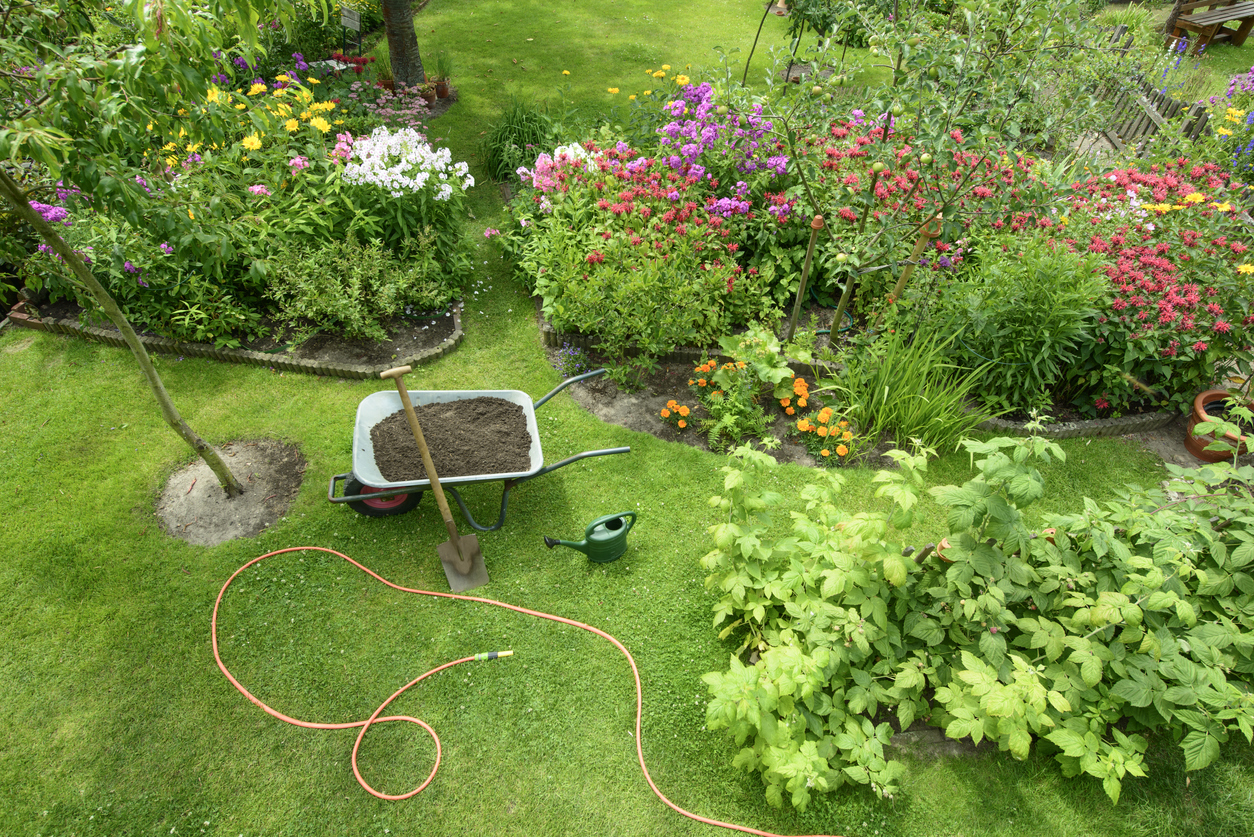Love your green thumb but live in a state with extreme temperatures, like Florida? Then you know there are some special considerations to keep in mind when choosing what to plant in your summer garden—namely the heat and humidity.
Although flowers survive on sunlight, the Florida summer heat can be too much for some. And while you may want to plant a variety of colorful flowers to enjoy, not all of them will survive if you don’t choose carefully.
But that doesn’t mean you can’t grow a luscious garden popping with color. It just means you have to raise the right flowers that can thrive in the Florida summer heat.
Can I Plant Flowers That Don’t Like the Heat?
The best-case scenario if you choose plants that don’t do especially well in the heat is that you spend a lot of extra time and energy taking care of them. The worst-case scenario is that they die quickly, wasting your money and leaving you with plants to replace.
10 Flowers for the Florida Summer Heat
So, what flowers grow well in Florida during the summer? Take your pick of the following 10 that bloom all summer long. With the proper care, there’s no reason these won’t sail right through summer and come out on the other side still dazzling.
1. Calliopsis or Tickseed (Coreopsis)

Coreopsis plants grow in clumps that look like bunches of daisies. They come in many colors and add a cheery look to your yard. Some are perennial, and some are annual, so when making your purchase, you’ll want to choose how long you want them around—for one year or even longer?
Care instructions: These plants are very easy to take care of, which is another reason they’re one of the best flowers to grow in Florida. When there’s no rain, water them occasionally and check to ensure they’re still in good shape.
2. Sage (Salvia)
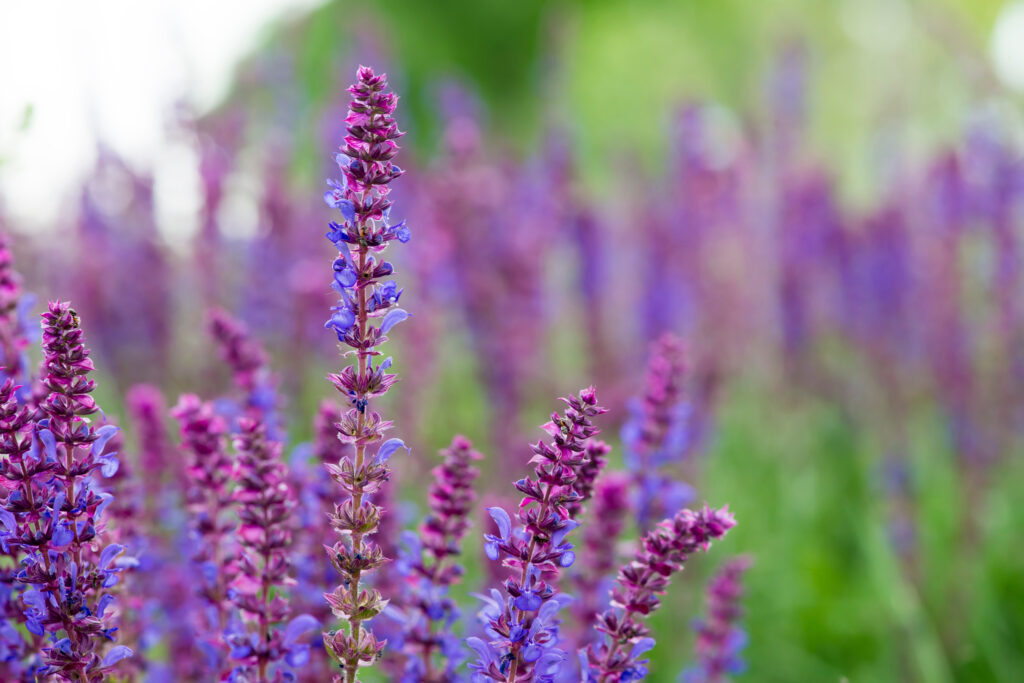
These pretty flowers can take the heat and drought, no problem. However, planting them in fast-draining soil or pots is best to prevent excessive moisture from the summer rains.
Though you might associate sage with the color purple, it comes in many colors and is commonly found in yards to attract pollinators. Bees and hummingbirds both love these plants and flock to them. Much like the coreopsis plants, sage is dense.
Care instructions: You should deadhead sage to encourage more blooming, but for the most part, they don’t need much care. Applying fertilizer in spring can help encourage blooming in summer.
3. Coral Bells (Heuchera)
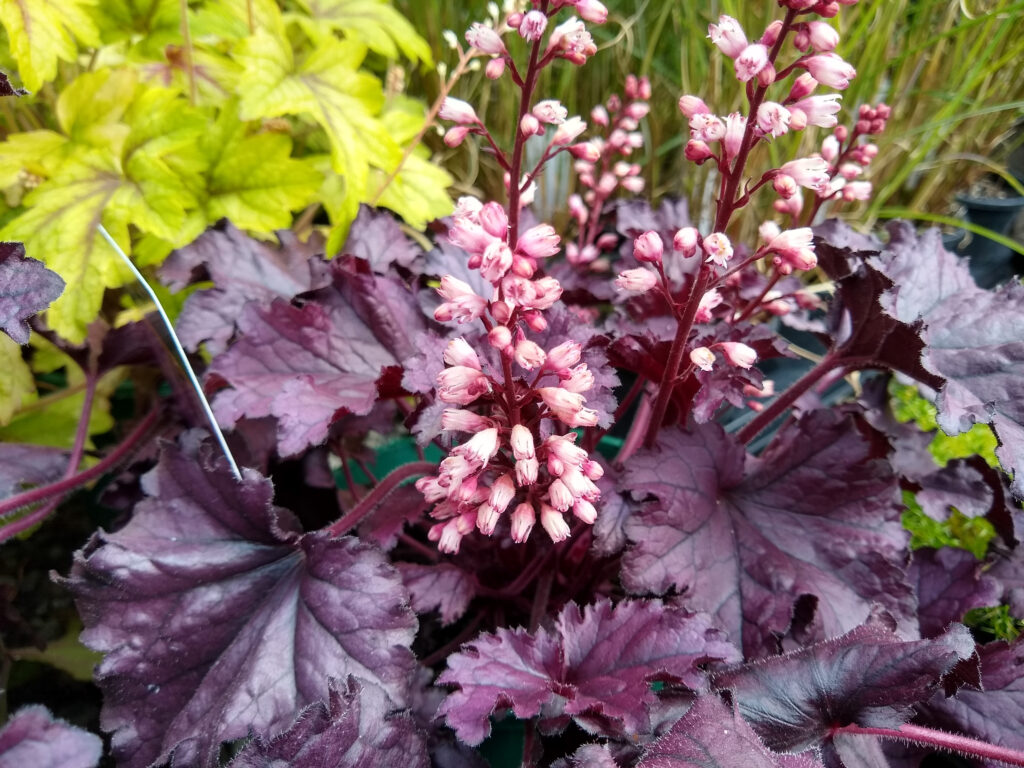
Semi-evergreen, these Florida summer flowers are sure to impress due to their bright foliage. Coral Bells don’t bloom for long during the year but will continue to return with the proper care. They’re usually burgundy or purple in color and tolerate both the sun and the shade, making them the perfect addition to your garden.
Care instructions: Coral bells are a little more high maintenance but still not too challenging to care for. They need well-drained soil with a slightly acidic or entirely neutral pH; after that, water them regularly to encourage growth.
4. Firespike (Odontoema Cuspidatum)
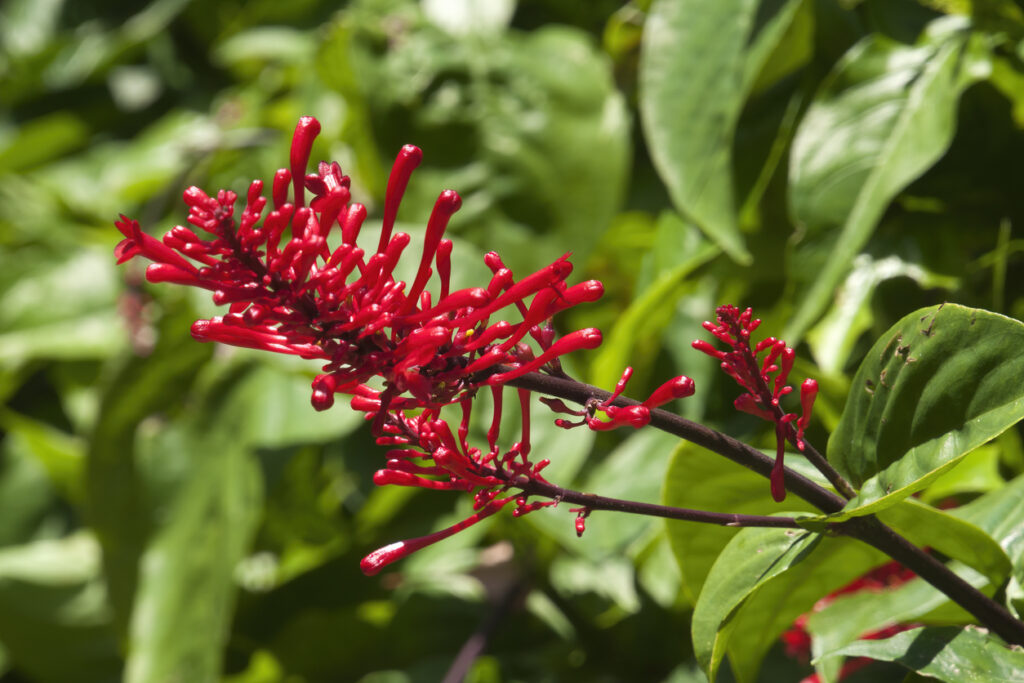
These red flowers sprout directly upwards, giving them a tubular appearance (hence the name). Firespike grows naturally throughout Florida and can reach up to four feet tall.
Care instructions: Soil with a neutral pH is best for the Firespike, but it’ll tolerate soil that’s slightly off in either direction. These summer flowers need plenty of sun to thrive, so placing them directly in the Florida heat is not only doable but ideal. They’ll still bloom in the shade, but not as magnificently.
5. Gerbera Daisy (Gerbera Jamesonii)
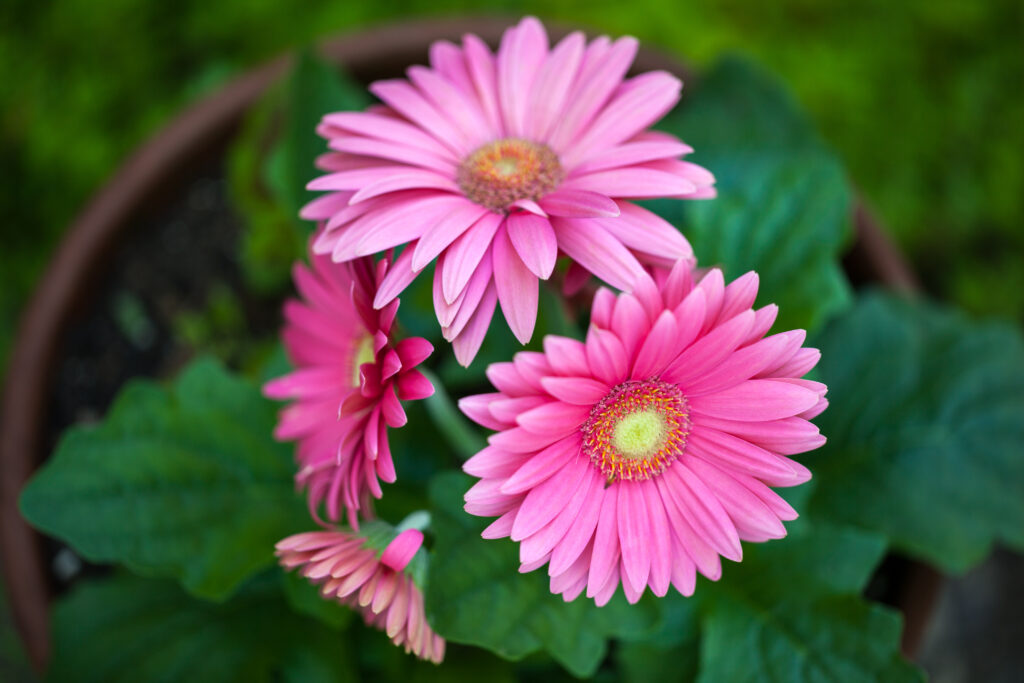
These South African flowers are some of the most vibrant you’ll ever see, making them a popular choice for yards. Gerbera Daisies vary in color and number of petals, so you can choose your favorite or mix and match—but all of them are very cheerful.
Care instructions: This plant is prone to fungus and rot, so it’s best to place them in full, direct sunlight. It’s also best to water them in the morning so that they can dry throughout the day and to space them out so fungus can’t spread if it becomes an issue.
6. Hibiscus
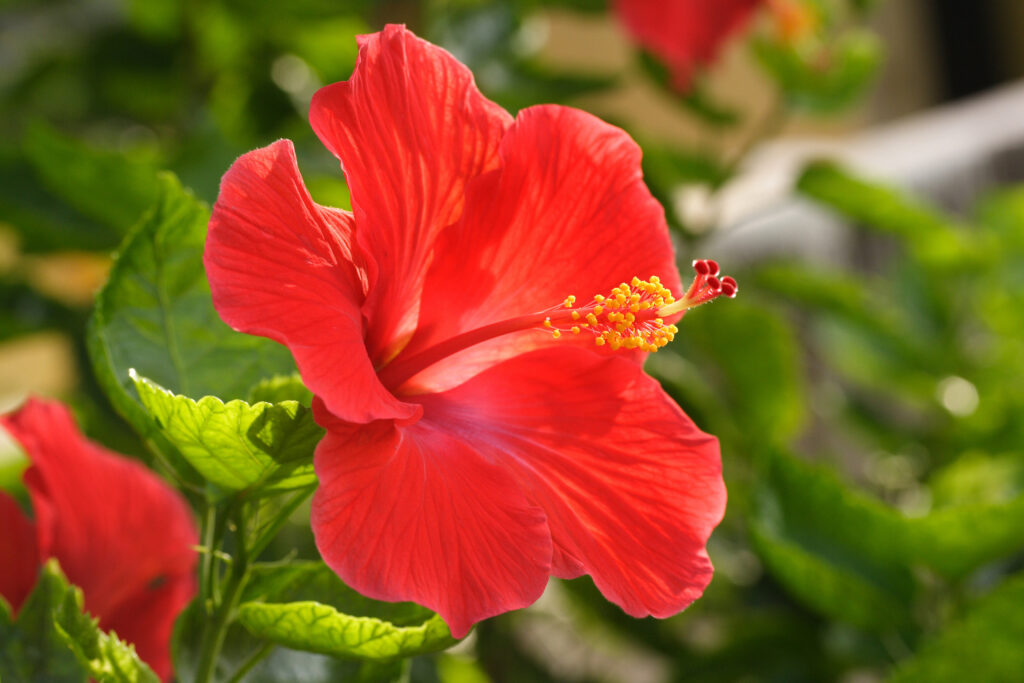
Hibiscus flowers only live for around three days at best, but a good plant will produce many from spring to fall, leaving you with pretty flowers to look at constantly. They require a lot of light and humidity, making them perfect for the Florida heat.
However, extreme temperatures of over 95°F for days on end can cause the flowers to droop. This isn’t usually a huge issue for Florida since the flowers have such short lifespans.
Care instructions: Propagating hibiscus cuttings is much easier than growing them from the seed. Once they start to grow, they are relatively low maintenance, though you must provide water and keep an eye on too high of temperatures.
7. Pentas (Pentas Lanceolata)

Pentas are sometimes called Egyptian stars, and it’s easy to see why due to their unique five-pointed shape. They can also get up to six feet tall and come in many colors, though you’ll mostly see them in red, pink, and white. Pentas grow slowly, so be prepared to have patience while waiting for them to bloom.
Care instructions: These plants are particularly low maintenance. Give them plenty of sunshine and heat (or let Florida do its job) and occasionally water them.
8. Blanket Flower (Gaillardia Aristata)
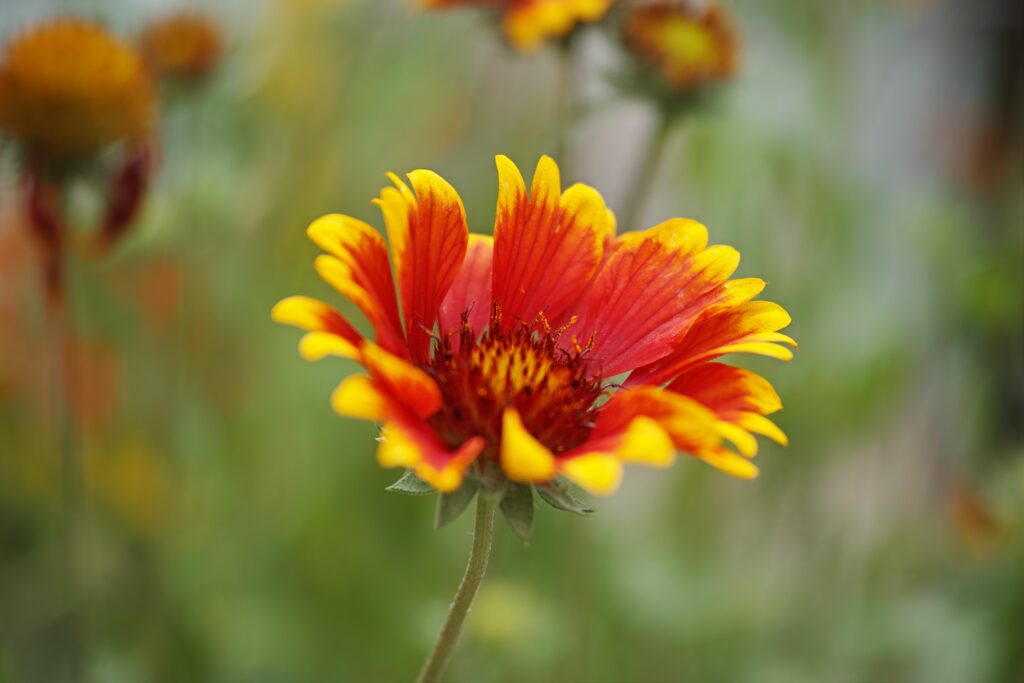
Blanket flowers are recognizable by their red center and yellow outer rim. They have a lifespan of around two years and are named because they tend to “blanket” an area as they spread across it—making them a quick way to cover a lot of your yard in warm, joyful tones.
Care instructions: Although Blanket flowers do better in dry heat than the humidity, they manage to grow well in Florida. They aren’t put off by extreme temperatures, so they’ll thrive even when it’s sweltering in the summer.
9. Petunias
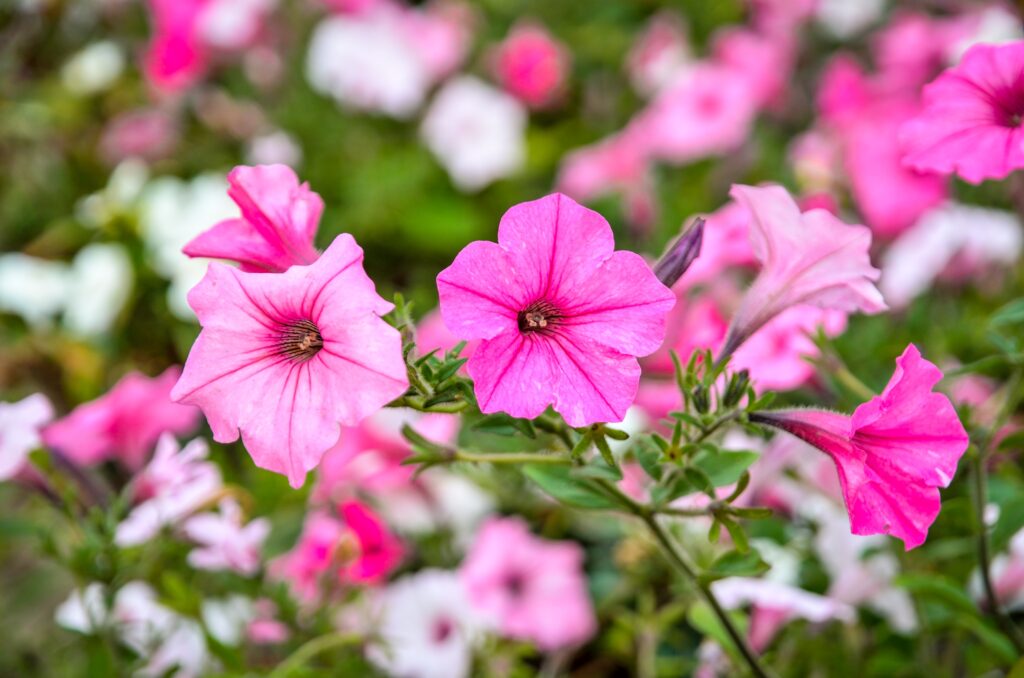
Petunias come in many patterns and colors and are popular because of their long lifespan. As long as you prune them when they start to lag, these are flowers that bloom all summer and then some.
Care instructions: After planting them in neutral to slightly acidic soil, ensure Petunias get plenty of water and sunlight. These flowers don’t do too well in the shade and need a lot of light to thrive.
10. Mexican Heather (Cuphea Hyssopifolia)

Mexican heather is an adorable annual shrub to add to any Florida garden. It is notable for its small summer-blooming flowers, which come in violet, red, and white. With its numerous tiny leaves, they are beautiful along garden paths or front yard walkways.
The densely packed branches can grow long, so be sure to tame them with shears by a third of their height to promote more compact growth.
Care instructions: Mexican heather enjoys full or partial sun, and you should water it often whenever the surface of the soil feels dry to the touch.
Remember to Take Care of Your Summer Flowers
Although these flowers love the Florida summer heat, that doesn’t mean they don’t require care or maintenance. Make sure you give them the attention they need to survive and thrive, even if it means creating a schedule and setting an alarm or two.
Thriving in hot temperatures comes naturally, but they still need their owner’s care to make it happen.
